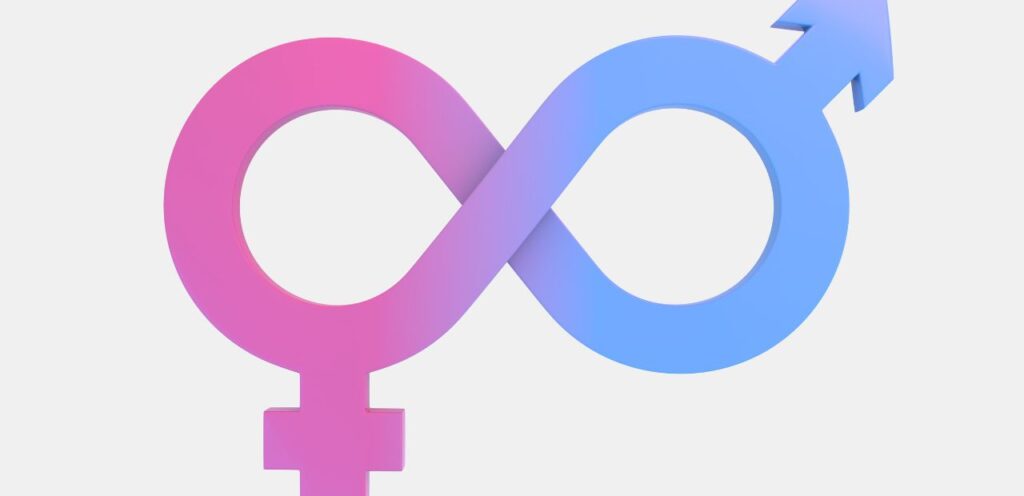Have you ever wondered which parent determines the sex of the baby? The answer is simple: the father determines whether a baby will be a boy or a girl. This happens when the sperm joins with the egg from the mother. We’ll explore how a baby’s sex is determined and everything parents might want to know about this fascinating process.
One of the most exciting things for pregnancy planning to think about is whether they’ll have a boy or a girl. Scientists have known for a long time that which parent gives birth to a baby decides its sex, but there are still a lot of myths and false ideas about it. Not the egg from the mother, but the sperm from the father determines whether the baby will be male or female. Let’s talk more about how this works and what parents should know about finding out the gender of their baby.
How Is A Baby’s Gender Determined?
During development, the process of figuring out the baby’s sex starts. To put it simply, this is how it works:
- The X gene is found only in women.
- Men have one X chromosome and one Y chromosome.
- An X chromosome is always in a woman’s egg when it is made.
- Half of a man’s sperm have an X chromosome and the other half have a Y chromosome.
- The child will be a girl if an X-chromosome sperm fertilizes the egg.
- A boy will be born if a sperm with a Y chromosome joins with the egg.
Who gets to decide what the baby’s gender is? The sperm from the father decides whether the baby will be a boy or a girl. The mother always gives an X chromosome, but the man can give either an X or a Y chromosome.

How Many Weeks Until Gender Determination?
The gender of your baby is known from the moment of conception, but you won’t be able to tell until the baby is more than six weeks old. When can you find out?
- By 10 weeks: A Y chromosome can be found in blood tests that look for the baby’s DNA in the mother’s body. This means the baby is a boy.
- Between 11-13 weeks: Some types of specialized ultrasounds can give early signs, but they aren’t always right.
- Around 18-20 weeks: This is when most parents find out during the anatomy scan ultrasound, which is a very good way to be sure.
Who Decides The Gender Of The Baby?
So far, we know that the father’s sperm determines the baby’s gender. Both X and Y chromosomes are equally likely to be in each sperm, so it’s completely random. Despite what some old wives’ tales may say, a couple can’t choose between having a boy or a girl by what they eat, when they conceive, or how they place themselves during the process.
Since the mother’s egg always has an X gene, she doesn’t have as much of an effect on how the sex is determined. The X gene in her body is the constant, and the sperm from her father is the variable.
What Sex Do Babies Start As?
What’s interesting is that all embryos have the same physical structures in the first few weeks of growth, no matter what their genetic sex is. During the first six to seven weeks of growth, male and female embryos look the same.
- In all embryos, there are “genital ridges” that can turn into reproductive organs for either a man or a female.
- Both male and female bodies can grow in any embryo.
- After seven weeks, a gene called SRY is turned on if the Y chromosome is present, which means the baby is naturally male.
- This gene, SRY, causes the testes to grow and make testosterone.
- The male organs grow because of testosterone.
- A genetic female embryo develops ovaries and female organs without the Y chromosome and SRY gene.
It’s like the “default” way for human embryos to grow is to become female. On a physical level, the Y chromosome is needed for male growth.

How Can You Find Out The Sex Of A Baby?
During pregnancy, there are a few ways to find out what gender your baby is:
- Ultrasound: Most of the time, an anatomy scan ultrasound between 18 and 20 weeks is used. This method is 95–99% correct.
- Genetic testing: It is almost always accurate to do tests like amniocentesis or chorionic villus sampling (CVS), but they are only done when genetic conditions are a worry..
- Blood tests: NIPT tests can find the baby’s DNA in the mother’s blood as early as 10 weeks into the pregnancy, and they can tell with about 99% accuracy what gender the baby is.
- In-vitro fertilization (IVF): If a couple tries to get pregnant with IVF, they can find out what gender the baby will be before the embryo is moved.
Some parents wait to find out their baby’s sex until they give birth. This can be a very fun surprise
Chances of Having a Girl vs. Boy
There are almost equal odds of having a boy or a girl. It’s slightly better for boys to be born than for girls. About 51% of kids born are boys and 49% are girls. But this small difference isn’t really visible for most families.
Even though the split is pretty even, some families tend to have children of only one gender. This could be because of several things:
- There’s a 50/50 chance that you’ll have more than one child of the same gender in a row.
- Some studies show that genes may have a small effect on which type of sperm (X or Y) is more likely to fertilize an egg.
- Things in the environment might have a small effect
Most couples, though, have a very close to 50/50 chance of having a boy or a girl with each pregnancy.
Conclusion
Who gets to decide what the baby’s gender is? Through the gene that the sperm brings to the egg, the father does. Finding out your baby’s sex during pregnancy is a natural process, but it can be one of the most exciting parts of being pregnant.
Remember that the most important thing is that your baby is healthy, not whether it’s a boy or a girl. Even though it’s normal to have opinions, the bond you’ll have with your child goes far beyond their sex.
With today’s science, we can find out our baby’s sex earlier and more accurately than ever before. However, some parents still choose to wait until the baby is born to have that special moment. Congratulations on the birth of your child! It will be a happy event whether you find out early or wait for the surprise.
If you want to learn more pregnancy guides visit Momvila today!
FAQs
Can you influence the sex of your baby naturally?
No, you can’t safely change your baby’s sex with natural methods. There are a lot of myths about diets and when to get pregnant, but the truth is that the sperm that fertilizes the egg (X for girl, Y for boy) is random. Medical processes like IVF that include genetic testing are the only surefire way to choose a baby’s gender.
Are there any signs during pregnancy that reveal the baby’s sex?
Your baby’s gender can’t be told from the signs of pregnancy. Myths about belly shape, how bad morning sickness is, or changes in heart rate have not been proven by science. You can only be sure of your baby’s gender through medical tests, such as ultrasounds (18–20 weeks) or blood tests (after 10 weeks).
Can a mother’s age affect whether she has a boy or girl?
The age of the woman doesn’t really affect whether she has a boy or a girl. Some studies show that women under 25 or over 40 have slightly better chances of having girls, but the difference isn’t very big. The sperm from the father still decides the sex, so the chances of getting pregnant are still pretty close to 50/50.






